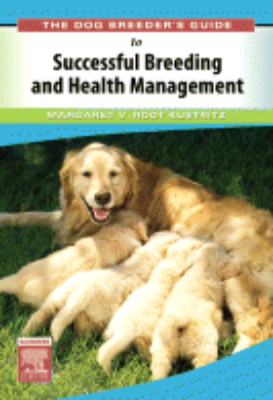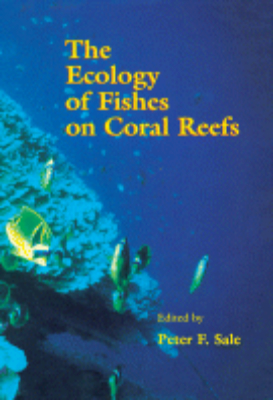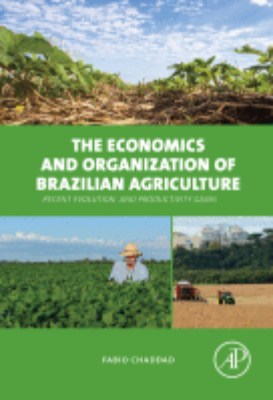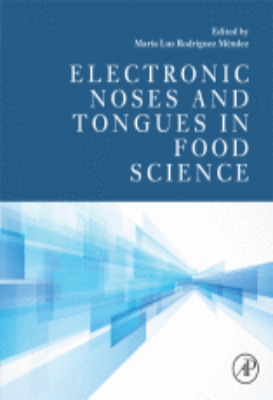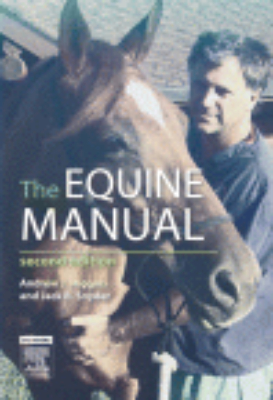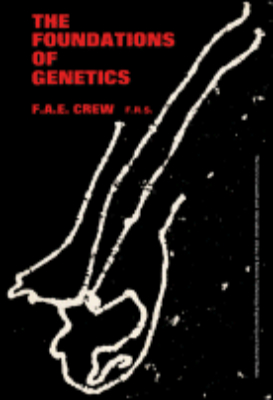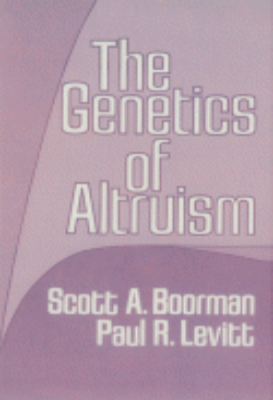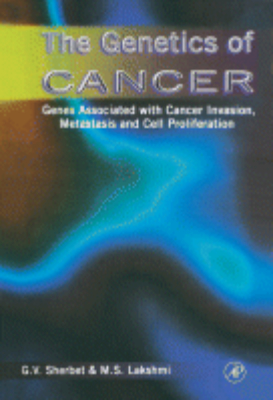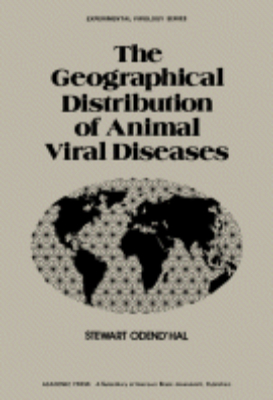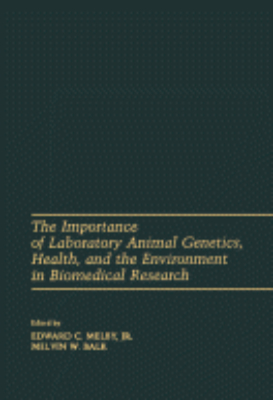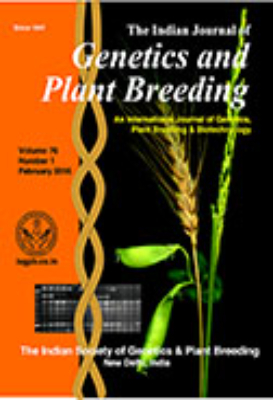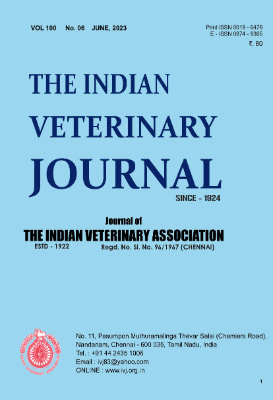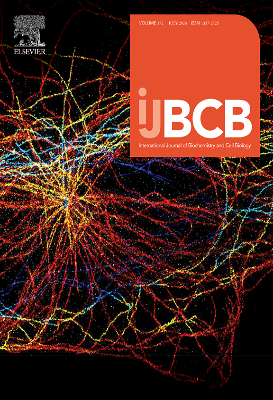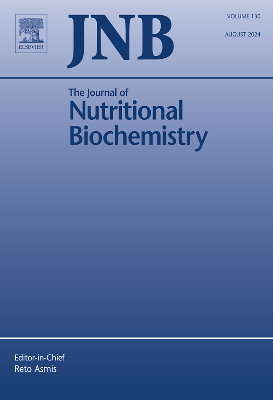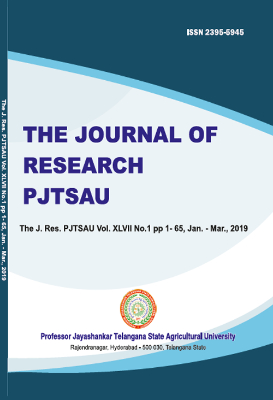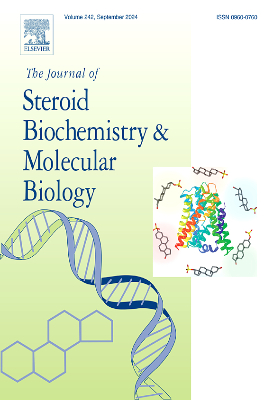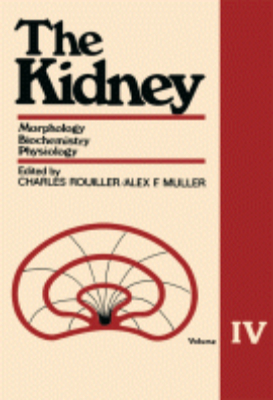E-Resources
The Dog Breeder’s Guide to Successful Breeding and Health Management
This unique resource offers a general overview of canine body systems and how each system affects the breeding process. Key topics include nutrition, pharmacology, microbiology, parasitology, vaccinations, genetics, and endocrinology, as well as normal anatomy and disorders of the male and female reproductive systems.
The Ecology of Fishes on Coral Reefs
This book provides a comprehensive and up-to-date review of the ecology of coral reef fishes presented by top researchers from North America and Australia. Immense strides have been made over the past twenty years in our understanding of ecological systems in general and of reef fish ecology in particular. Many of the methodologies that reef fish ecologists use in their studies will be useful to a wider audience of ecologists for the design of their ecological studies. Significant among the impacts of the research on reef fish ecology are the development of nonequilibrium models of community organization, more emphasis on the role of recruitment variability in structuring local assemblages, the development and testing of evolutionary models of social organization and reproductive biology, and new insights into predator-prey and plant-herbivore interactions.
The Economics and Organization of Brazilian Agriculture
“The Economics and Organization of Brazilian Agriculture: Recent Evolution and Productivity Gains presents insights on Brazilian agriculture and its impressive gains in productivity and international competitiveness, also providing insightful examples for global policymakers. In Brazil, as in many countries, many economists and policymakers believe that agriculture is a traditional, low-tech sector that crowds out the development of other economic sectors and the country. This book shows that this anti-agriculture bias is ill-informed, and with population growth, rising incomes, urbanization and diet changes especially in developing countries like China and India on the rise, the demand for food is expected to double in the next 40 years. Brazil has the natural resources, technology and management systems in place to benefit from this expected growth in food consumption and trade. Through real-world examples, the book shows how other low-latitude countries with tropical climate and soils like Brazil especially in sub-Saharan Africa can benefit from the agricultural technology, production, and management systems developed in Brazil. Case studies in each of three key categories, including technology, resource management, and effective government programs provide valuable insights into effective decision-making to maximize the effect of each. Key Features. Provides important and practical insights into achievable agricultural options via case studies. Addresses the use of natural resources, technological advances, and management systems to create viable, adaptive economic growth. Applies lessons learned in Brazil to improving both economic and ecological resource-sustainable agriculture for other regions and countries”
The Electronic Nose and Tongue in Food Science
Electronic Noses and Tongues in Food Science describes the electronic products of advanced chemical and physical sciences combined with intuitive integration of microprocessors, advanced bioinformatics and statistics. These include, for example, voltammetric, bio-electronic, piezoelectric platforms made from a variety of components including, nanoparticles, enzyme biosensors, heavy metals, graphite-epoxy composites, metal oxide semiconductors, microelectrodes, microfluidic channels, pre-manufactured gas sensors, redox enzymes and others and is an ideal resource for understanding and utilizing their power in Food Science settings. Devices used to analyse one particular food item can theoretically be adapted for other food items or components. This does not just mean the re-deploying the physical platforms but also the mode of bioinformatic and statistical analysis. This includes artificial neural networks (ANN), linear discriminant analysis (LDA), partial least squares (PLS), principal component analysis (PCA) etc. In other words, there is cross transference of chemistry, physics, concepts, techniques, findings and approaches from one food to another. Electronic noses and tongues are two of these devices but are advancing in application and importance. This book provides examples of the use of electronic noses and tongues to characterise components that contribute to sensory or compositional profiles, from ripening to harvesting and from storage of raw materials to packaging and consumption. These devises are suitable for high-throughput analysis, quality control or to determine the nature and extent of spoilage and adulteration, and have also been used to ascertain the geographical origins of food and mixtures.
The Equatorial Rain Forest
The Equatorial Rain Forest: A Geological History presents the equatorial vegetation as a dynamic entity with varied and highly significant history. It also discusses other types of equatorial regions. It addresses the vegetational history from a palaeoecological viewpoint. Some of the topics covered in the book are the vegetation of equatorial regions; the prelude to the quaternary; the quaternary vegetation of equatorial Latin America; the quaternary vegetation of equatorial Africa; the cretaceous period; and the quaternary vegetation of equatorial indo-malesia. The value of vegetational history is fully covered. The effect of man on vegetation is discussed in detail. The text describes in depth the methods of studying vegetational history. The Paleocene, Eocene, and Oligocene epochs are presented completely. A chapter is devoted to the palynological evidence and synthesis. Another section focuses on the xeroseres, hydroseres and related successions. The book can provide useful information to botanists, geologists, students, and researchers.
The Equine Manual
This second edition of the popular resource serves as a ready reference for equine practitioners. It provides comprehensive coverage of all aspects of equine medicine and many surgical conditions. It is a hands-on, user-friendly text aimed at the busy practitioner, veterinary students, specialist equine technicians and others with an interest in horse health. Covers new topics, including intensive care, the pre-purchase examination, equine behavior, and anesthesia (including euthanasia).
The Evolution of Genetics
The Evolution of Genetics provides a review of the development of genetics. It is not intended as a history of the science of heredity. By a brief and general survey, however, it seeks to show the connections of past to present research, and of current discoveries to future investigations. The book opens with a chapter on the legacy of classical genetics. This is followed by separate chapters on the use of microorganisms in molecular genetics; the structure and replication of genetic material; mutation and recombination of genetic material; the heterocatalytic function of genetic material; and concludes with a discussion of the future of genetics. Undergraduates considering a career of teaching or research in biology, students who are embarking on graduate studies in biology, professional biologists working in fields other than genetics but interested in current research on heredity, and laymen who have had some education in biology and have a continued interest in biological science may find something useful in this book.
The Evolution of Plant Physiology
“Coupled with biomechanical data, organic geochemistry and cladistic analyses utilizing abundant genetic data, scientific studies are revealing new facets of how plants have evolved over time. This collection of papers examines these early stages of plant physiology evolution by describing the initial physiological adaptations necessary for survival as upright structures in a dry, terrestrial environment. The Evolution of Plant Physiology also encompasses physiology in its broadest sense to include biochemistry, histology, mechanics, development, growth, reproduction and with an emphasis on the interplay between physiology, development and plant evolution. Key Features. Contributions from leading neo- and palaeo-botanists from the Linnean Society. Focus on how evolution shaped photosynthesis, respiration, reproduction and metabolism.. Coverage of the effects of specific evolutionary forces — variations in water and nutrient availability, grazing pressure, and other environmental variables”
The Exergy Method of Thermal Plant Analysis
The Exergy Method of Thermal Plant Analysis aims to discuss the history, related concepts, applications, and development of the Exergy Method – analysis technique that uses the Second Law of Thermodynamics as the basis of evaluation of thermodynamic loss. The book, after an introduction to thermodynamics and its related concepts, covers concepts related to exergy, such as physical and chemical exergy, exergy concepts for a control method and a closed-system analysis, the exergy analysis of simple processes, and the thermocentric applications of exergy. A seven-part appendix is also included. Appendices A-D covers miscellaneous information on exergy, and Appendix E features charts of thermodynamic properties. Appendix F is a glossary of terms, and Appendix G contains the list of references. The text is recommended for physicists who would like to know more about the Exergy Method, its underlying principles, and its applications not only in thermal plant analysis but also in certain areas.
The Foundations of Genetics
The Foundations of Genetics describes the historical development of genetics with emphasis on the contributions to advancing genetical knowledge and the various applications of genetics. The book reviews the work of Gregor Mendel, his Law of Segregation, and of Ernst Haeckel who suggested that the nucleus is that part of the cell that is responsible for heredity. The text also describes the studies of W. Johannsen on “pure lines,” and his introduction of the terms gene, genotype, and phenotype. The book explains the theory of the gene and the notion that hereditary particles are borne by the chromosomes (Sutton-Boveri hypothesis). Of the constituent parts of the nucleus only the chromatin material divides at mitosis and segregates during maturation. Following studies confirm that the chromatin material, present in the form of chromosomes with a constant and characteristic number and appearance for each species, is indeed the hereditary material. The book describes how Muller in 1927, showed that high precision energy radiation is the external cause to mutation in the gene itself if one allele can mutate without affecting its partner. The superstructure of genetics built upon the foundations of Mendelism has many applications including cytogenetics, polyploidy, human genetics, eugenics, plant breeding, radiation genetics, and the evolution theory. The book can be useful to academicians and investigators in the fields of genetics such as biochemical, biometrical, microbial, and pharmacogenetics. Students in agriculture, anthropology, botany, medicine, sociology, veterinary medicine, and zoology should add this text to their list of primary reading materials.
The Genesis and Classification of Cold Soils
The Genesis and Classification of Cold Soils exposes the processes involved in the development of the principal kinds of soils that occur in cold regions and introduces readers to the classification of those soils. The book uses the terminologies and concepts of the description of soils provided by the Soil Taxonomy of the United States. Topics covered in the book include aspects of temperature relationships in cold soils; effects of freezing temperatures on the soil properties; the salient features of the U.S. Soil Taxonomy system; and the taxonomies of Canada, the U.S.S.R., and The Food and Agriculture Organization (FAO). Pedologists, agriculturists, engineers, and researchers will find the book insightful.
The Genetics of Altruism
The Genetics of Altruism covers the primary findings on social evolution, social trait, and altruism from a population genetics standpoint to establish a system of genetic boxes. It presents an evolutionary question with two faces: Why are there so many social species Why, in all the diversity of the animal kingdom, are the social species so few To address the evolutionary question, this book focuses on recognition of the fact that on an evolutionary time, scale genetics must underlie all changes in the capacity for social structure and other aspects of organic evolution. It presents comparative analyses framed in mathematical terms; mathematical concepts as a means of getting outside human, perhaps more generally primate and carnivore; frames of reference; and alternative network combinatorics as a natural basis for comparing social structures that are phylogenetically remote. It also discusses the comparative biology of social behavior on a purely descriptive basis through the social and evolutionary structures emergent. The book concludes by discussing major evolutionary pathways, various kinds of preadaptedness for sociality, and the use of cascade principle to suggest ways in which human evolution may have been a special case. This book is a valuable resource for biologists, social scientists, researchers, students, and all those who want to broaden their knowledge in the field of social behavior and altruism.
The Genetics of Cancer
Written by internationally recognized experts, The Genetics of Cancer provides up-to-date information and insight into the genetic basis of cancer and the mechanisms involved in cancer invasion and its secondary spread. This volume presents the deregulation of the cell cycle in tumor development and integrates the function of tumor suppressor genes, oncogenes, and metastasis-associated genes in the pathogenesis and progression of cancer. The Genetics of Cancer will be useful to all graduate students, clinicians, and researchers working in the fields of cancer biology, genetics, and molecular biology.
The Geographical Distribution of Animal Viral Diseases
The Geographical Distribution of Animal Viral Diseases attempts to shed some light on the global distribution of 110 different viral diseases, mainly of livestock and companion animals. The world literature was screened for 110 different viruses, and maps were prepared. These maps delineate the global distribution of pathogenic viruses based on authenticated reports from a variety of reliable sources. Four viruses were categorized as affecting more than one species to a significant degree (astrovirus, rabies, rotaviruses, and Rift Valley fever). The largest number of maps involved viruses that affect humans. Of the 28 viruses a large number were from the California encephalitis group. Ten of the 28 viruses were reported only in the Eastern Hemisphere, 14 only in the Western Hemisphere, and four were worldwide. Birds were the next most frequently affected group with the 15 viruses, followed by pigs with 14 viruses. Overall the vector-borne viruses appear to have much sharper and clear-cut geographical boundaries than the others.
The Importance of Laboratory Animal Genetics Health and the Environment in Biomedical Research
The Importance of Laboratory Animal Genetics, Health, and the Environment in Biomedical Research documents the proceedings of the Fifth Charles River International Symposium on Laboratory Animals, in Heidelberg, Federal Republic of Germany, March 14-16, 1983. These papers examine how the health and genetic monitoring of laboratory animals, coupled with environmental influences, affect the investigations of oncologists, toxicologists, or pharmacologists. The book is organized into four parts. Part I focuses on the health monitoring of laboratory animals for biomedical research. It includes studies on the effects of health and health monitoring in toxicology studies, oncology studies, and pharmacologic studies. Part II deals with the genetic monitoring of laboratory animals. It examines the causes of genetic alternation in laboratory animals and ways to prevent them. Part III considers the environmental monitoring that is necessary for research on laboratory animals. Part IV on new research frontiers includes studies on the production of monoclonal antibodies for the experimental and therapeutic modulation of laboratory animals, and the quality control aspects of animal experimentation.
The Indian Journal of Agricultural Sciences
A journal devoted to experimental agriculture and abstracted by all the major abstracting services. It includes articles on cytology, genetics, breeding, agronomy, soil science, horticulture, water use, microbiology, plant diseases and pest, agricultural engineering, economics and statistics with emphasis on original articles, from India and countries having similar agricultural conditions.
The Indian Journal of Genetics and Plant Breeding
Focus and Scope The Indian Journal of Genetics and Plant Breeding is a periodical for the publication of records of original research in all branches of genetics, plant breeding and cytology, including human genetics, molecular biology and biotechnology, and other cognate sciences of sufficient importance and of such a character as to be of primary interest to the geneticist and plant breeders. Publication Frequency THe journal is published quarterly. Open Access Policy This journal provides immediate open access to its content on the principle that making research freely available to the public supports a greater global exchange of knowledge. Sponsors
The Indian Veterinary Journal
The Indian Veterinary Association (IVA) is the apex organization of more than 65,000 veterinarians of the country spread over from Kashmir to Kanyakumari and Gujarat to Nagaland. Every State and UT has its own veterinary association, which is affiliated to this apex parent body. The Indian Veterinary Journal (IVJ) is the official organ of IVA and offices of both IVA and IVJ are located at No. 7/11, Pasumpon Muthuramalinga Thevar Salai, (Chamiers Road) Nandanam, Chennai 600 035. IVJ has a history of more than ninety-eight years and is being published from 1924 onwards. The Indian Veterinary Journal, popularly known as IVJ among veterinarians is a monthly periodical of international status devoted to the cause of updating knowledge of the of veterinarians with its research and clinical articles. It is a monthly journal with twelve issues in a year with ISSN (Print): 0019-6479; ISSN (online): 0974-9365. Website of this journal is http://www.ivj.co.in & https://epubs.icar.org.in/index.php/IVJ . The Journal publishes original work in veterinary medicine, animal health production, veterinary clinical subjects and allied disciplines such as Dairy development, livestock and poultry husbandry etc., The Journal is of particular importance to field veterinarians, veterinary faculty, veterinary practitioners, researchers, veterinarians from industry and Under graduate, Post graduate and doctoral students from universities of Veterinary & Animal Sciences. The Indian Veterinary Journal has an editorial board comprising of members at the level of Vice Chancellors of the leading Veterinary Universities and IVA president and members representing various states in India. In addition an exclusive International Editorial Advisory Board (IEAB) functions with members from overseas universities/Institutes from United States, United Kingdom, Australia, Hong Kong, Vietnam and Bangladesh.
The International Cocoa Trade
“An overview of the history of cocoa, the factors affecting its production and consumption as well as how the trade is conducted, various risks mitigated, and by whom. The International Cocoa Trade is a work designed to inform all on the subject of cocoa and an essential guide for those involved in its trade.Dr J. Vingerhoets, Executive Director, ICCOCocoa is a valuable commodity, and the cocoa trade involves many different parties from growers and exporters through dealers and factories to those trading futures and options and the banks they deal with. The International Cocoa Trade provides an authoritative and comprehensive review of the cocoa trade at the beginning of the twenty-first century, and the main factors that drive and affect that business.The opening chapter of the third edition examines the history and origins of the international cocoa trade, and its recent developments. The agronomics of cocoa production are discussed in chapter two whilst chapter three deals with the environmental and practical factors affecting cocoa production. Chapters four, five and six cover issues around the export and trading of physical cocoa, including the actuals market, the physical contracts used and the futures and options markets. In chapter seven, the international consumption and stocks of cocoa are reviewed with chapter eight discussing the issue of quality assessment of cocoa beans for international trade. Finally, chapter nine focuses on the end product, examining the processing of cocoa beans and the manufacture of chocolate. Updated appendices provide copies of some of the most important documents used in the cocoa trade, including contracts, sale rules and world production statistics.This comprehensively updated third edition of The International Cocoa Trade ensures its continued status as the standard reference for all those involved in the production consumption and international trading of cocoa. Key Features. Provides an authoritative and comprehensive review of the cocoa trade at the beginning of the twenty-first century, and the main factors that drive and affect that business. Examines the history and origins of the international cocoa trade, and its recent developments featuring a discussion of environmental and practical factors affecting cocoa production. Explores issues concerning the export and trading of physical cocoa, including the actuals market, the physical contracts used and the futures and options markets
The International Journal of Biochemistry & Cell Biology
Biochemistry, Genetics and Molecular Biology
The Journal of Research, PJTSAU
Focus and Scope The Journal consists of research publications in the field of agriculture and allied sciences authored by scientists, students and other eminent agriculture scientists on relevant and time specific research. The Journal publishes National as well as International research papers. Peer Review Process Journal has specific peer review policy for evaluating the research paper before publishing. It includes following steps First screening by Chief Editor of Journal. If accepted it is sent to concerned subject reviewers(2). And then it is sent to author for necessary modifications. After receiving from author it is sent for Language (English) screening. The final screening is done by Chief Editor and accepted for publication. The total process is completed between 30-45 days and four reviewers are involved in accepting the paper for publication. Publication Frequency
The Journal of Steroid Biochemistry and Molecular Biology
Biochemistry, Genetics and Molecular Biology
The Kidney Morphology Biochemistry Physiology
The Kidney: Morphology, Biochemistry, and Physiology, Volume IV covers the developments in the study of renal structure and function, particularly on the subcellular and molecular level. This book is composed of six chapters that consider the correlation of kidney’s structure with function, as well as the participation of the kidney in metabolic systems and its relation to other organs. This text discusses topics such as experimental and renal transplantation, the structure and function of the juxtaglomerular apparatus, and the macula densa. Other chapters deal with the gaseous and substrate metabolism of the kidney and the role of this organ in the osmotic concentration and dilution of the urine. The remaining chapters explore hydrogen secretion, potassium and sodium excretion, and the correlation of the kidney with vitamins and parathyroid gland. This book is of value to morphologists, biochemists, physiologists, pathologists, pharmacologists, and clinicians.
The Laboratory Fish
This reference series provides researchers of all kinds with comprehensive practical information on different species of laboratory animals, for daily laboratory use. Each title in the series in devoted to a different species. and draws together all available data in one easily accessible source. Each has similar format, with sections on the strains available, their husbandry and special diets. This leads to sections on gross anatomy, endocrinology and reproduction, followed by more detailed sections on neuroanatomy, vasculature, cell biology and histology of particular organs and structures, and a section on molecular biology. High quality illustrations are included throughout, with copious color histology microphotographs. Key Features @introbul:Key Features@bul:* Comprehensive reference source for anybody working with laboratory fish* 2-color, user-friendly format* Copious high quality illustrations included throughout* Color plate section* Glossary* Appendix of useful addresses
The Laboratory Mouse
Among animals used in research, teaching and testing, mice are now widely recognized as the most important model for human diseases and disorders. They comprise the majority of all experimental mammals and tend to be the model of choice used for research into many diseases/disorders including cancer, heart disease, asthma, Alzheimers, Down syndrome, deafness, osteoporosis, obesity, diabetes and even mental health research. Additionally the laboratory mouse continues to play a widely publicized vital role in the human genome project.One of the most time-consuming activities in research laboratories is looking up information specific to the species or strain of animal being used. This book, part of the highly successful Handbook of Experimental Animals series, allows the user quick access to any point of interest on the mouse as an experimental model.
The Laboratory Primate
A volume in the Handbook of Experimental Animals series, The Laboratory Primate details the past and present use of primates in biomedical research, and the husbandry, nutritional requirements, behaviour, and breeding of each of the commonly used species. Practical information on regulatory requirements, not available in other texts, is covered. Sections on experimental models cover the major areas of biomedical research, including AIDS, cancer, neurobiology and gene therapy. Assisted reproductive technology, tissue typing, and minimum group sizes for infectious disease/vaccine studies are also included.
The Laboratory Rat
This reference series will provide all researchers using laboratory animals with comprehensive practical information on the various species. Each title in the series is devoted to a particular species, and draws together all available data in a “one-stop”, easily accessible source. Each has similar format, with sections on the strains available, their husbandry, and special diets. Also included are sections on gross anatomy, endocrinology, and reproduction, followed by more detailed sections on neuroanatomy, vasculature, cell biology, and histology of particular organs and structures, and a section on molecular biology. High quality illustrations are included throughout and a color plate section is provided. A glossary, list of equipment suppliers, and “Quick Reference Section” are added features. The “Quick Reference Section” brings together all tables from the text, allowing readers to find data swiftly. The first volume in The Handbook of Experimental Animals Series, The Laboratory Rat, provides researchers in academia and industry using laboratory animals with comprehensive, practical information on the species. The Laboratory Rat has been divided into eight sections dealing with:* Strains and their selection for research* Housing and maintenance* Pathogens and diseases* Breeding and reproduction* Anatomy* Physiology* Procedures, including experimental surgery* Emerging techniques, including genetic engineering and molecular technology

